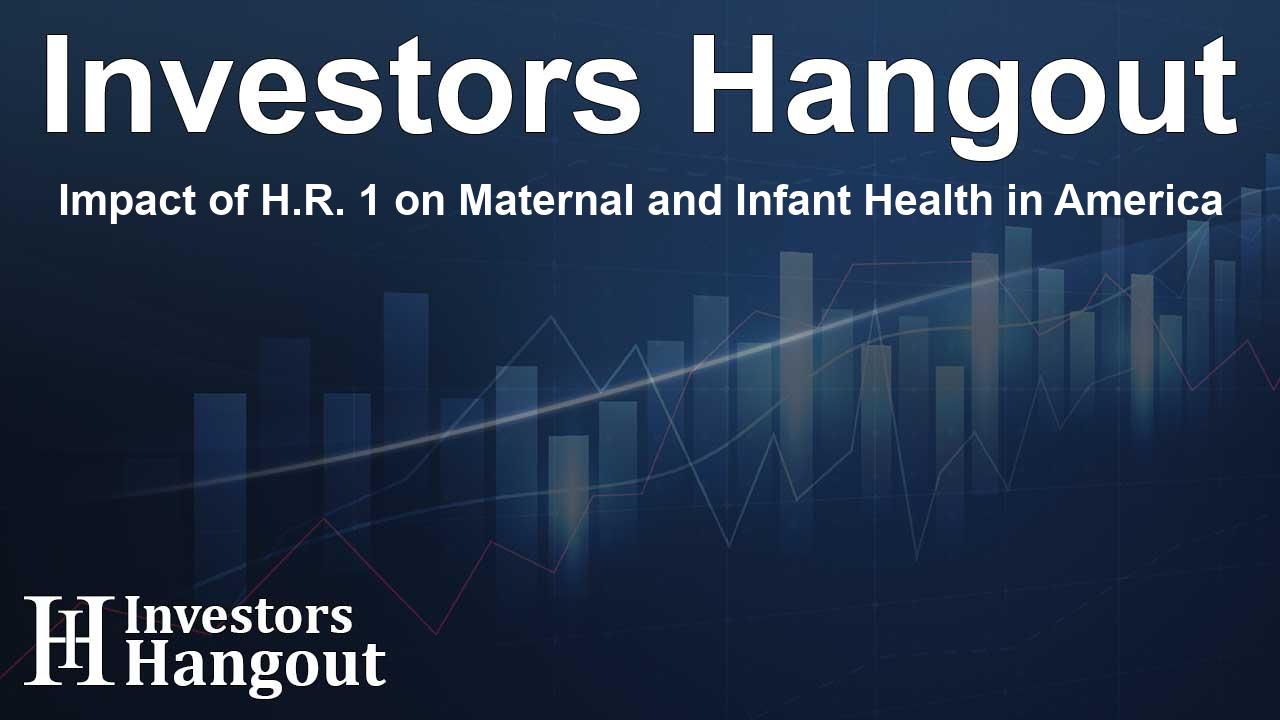Impact of H.R. 1 on Maternal and Infant Health in America

Impact of H.R. 1 on Maternal and Infant Health
The passage of H.R. 1, known as the "One Big Beautiful Bill Act," is causing alarm among health advocates due to its potential to significantly alter Medicaid as we know it. This legislation threatens to impose harmful changes that restrict access to essential health care services for pregnant women, infants, and low-income families. As the national dialogue shifts toward the significant implications of these changes, many organizations, including the March of Dimes, are expressing their strong opposition.
Challenges Posed by H.R. 1
The new legislation introduces work requirements, increases cost-sharing, and limits federal funding for essential services, placing a heavy burden on the states already dealing with financial constraints. The implications could very well endanger the integrity of the Medicaid program, leading to higher risks for millions—especially vulnerable populations who depend heavily on these resources for maternal and infant health care.
Risks to Maternal and Infant Health Care
With the proposed adjustments to Medicaid, the maternal and infant health system faces direct and immediate threats. As reports have indicated, the United States is already one of the most perilous high-income countries for childbirth. The proposed reductions and constraints could lead to a further decline in maternal health outcomes across the nation. Additionally, we may see critical optional benefits, such as the 12-month postpartum Medicaid extension, being dismantled, endangering vital care that mothers need after giving birth.
Consequences for Families and Healthcare Systems
These changes are poised to make it increasingly challenging for families to access timely and comprehensive care, particularly in maternity care deserts where options are already limited. Such restrictions could result in the closure of labor and delivery units and maternity wards, exacerbating the already existing healthcare challenges in underserved regions.
Personal Stories Highlighting Real-Life Impact
The effects of these legislative changes are not just theoretical; they are reflected in the personal stories of families across the country. Cindy Rahman, the President and CEO of March of Dimes, shared a poignant account of a mother she met who was pregnant with twins but had only about $14 to her name. For her, Medicaid was not just an option; it was a lifeline that made it possible for her and her babies to survive. This is a reality for many families who rely on these vital services.
The Role of Medicaid in Births
Currently, Medicaid covers over 41% of all births in the United States and nearly 39% of all children. Any cuts to this critical program will reverse years of progress in maternal and child health, deepen health disparities, and make essential services even more challenging to access. Families facing difficult economic times depend on Medicaid to secure the health of their infants and themselves.
The Path Forward for Maternal Health Advocacy
Moving forward, states will inevitably face tough decisions about which services they can sustain in the wake of these changes. Programs foundational to maternal and infant health—such as postpartum care and access to obstetric providers—are now at risk, jeopardizing the futures of countless families.
With more than 80% of maternal deaths being preventable, the nation cannot afford to regress; hence, advocacy and policy changes that prioritize the health of mothers and babies must remain at the forefront. March of Dimes is dedicated to fostering an environment where every family has the tools and opportunities needed for a healthy start. The organization urges legislators from both parties to collaborate on solutions that safeguard the health and welfare of women, babies, and families throughout the country.
Frequently Asked Questions
What does H.R. 1 propose regarding Medicaid?
H.R. 1 suggests implementing changes, including increased work requirements and cuts to funding, that could severely limit access to Medicaid for vulnerable populations.
Why is the March of Dimes opposed to H.R. 1?
March of Dimes argues that the bill undermines the Medicaid program and jeopardizes the health of mothers and infants relying on these services for essential healthcare.
How does Medicaid affect maternal and infant health in the U.S.?
Medicaid is a crucial provider for maternal and infant health, covering over 41% of all births, thus playing a vital role in ensuring families receive necessary care.
What are the potential consequences of changes to Medicaid?
Potential consequences include increased barriers to care, closures of maternity wards, and further health disparities for low-income and vulnerable mothers and infants.
What actions can be taken to support maternal health?
Advocacy for policies that protect and enhance Medicaid and maternal healthcare services is critical, alongside fostering bipartisan cooperation to improve health outcomes for families.
About The Author
Contact Caleb Price privately here. Or send an email with ATTN: Caleb Price as the subject to contact@investorshangout.com.
About Investors Hangout
Investors Hangout is a leading online stock forum for financial discussion and learning, offering a wide range of free tools and resources. It draws in traders of all levels, who exchange market knowledge, investigate trading tactics, and keep an eye on industry developments in real time. Featuring financial articles, stock message boards, quotes, charts, company profiles, and live news updates. Through cooperative learning and a wealth of informational resources, it helps users from novices creating their first portfolios to experts honing their techniques. Join Investors Hangout today: https://investorshangout.com/
The content of this article is based on factual, publicly available information and does not represent legal, financial, or investment advice. Investors Hangout does not offer financial advice, and the author is not a licensed financial advisor. Consult a qualified advisor before making any financial or investment decisions based on this article. This article should not be considered advice to purchase, sell, or hold any securities or other investments. If any of the material provided here is inaccurate, please contact us for corrections.
